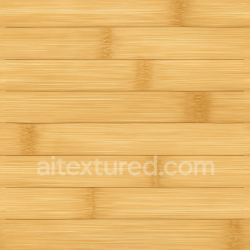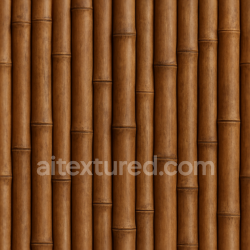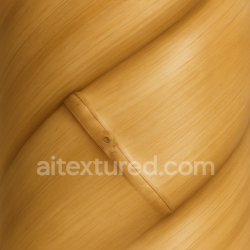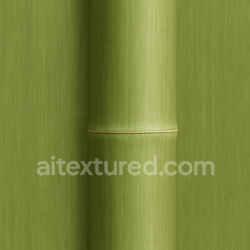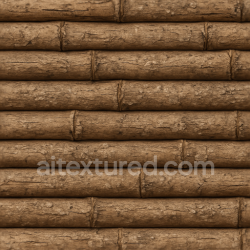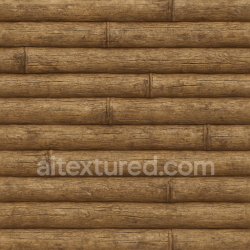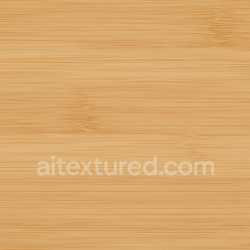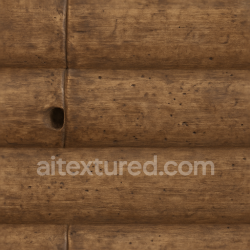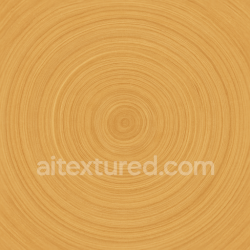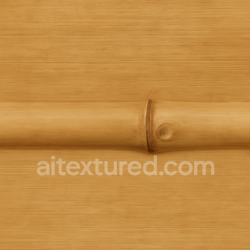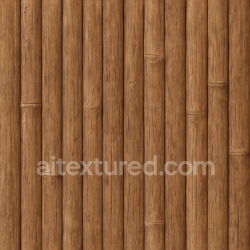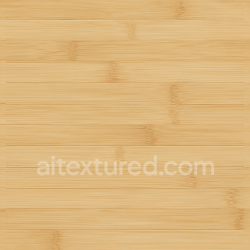Comprehensive Guide to Seamless PBR Ice Textures for Realistic 3D Surfaces
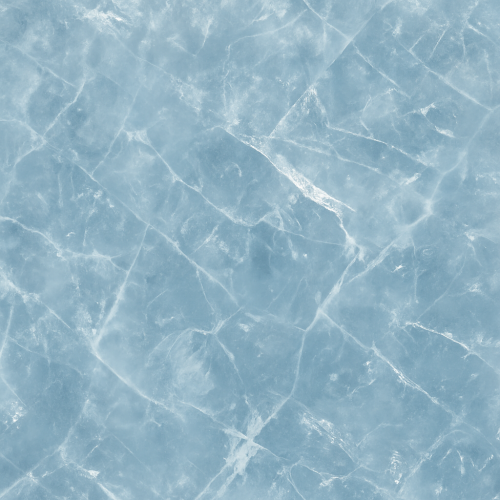
Capturing high-fidelity ice textures for physically based rendering (PBR) workflows demands a meticulous approach that balances the intrinsic optical properties of ice with practical constraints of 3D asset production. Ice, as a material, is notably complex due to its semi-translucent nature, subtle color variations, intricate frost patterns, and a wide range of surface imperfections that often display micro- and macro-scale details. These characteristics pose significant challenges during data acquisition and subsequent authoring of PBR maps such as albedo, roughness, normal, ambient occlusion (AO), and height, which collectively define the final appearance in real-time engines like Unreal Engine or offline renderers such as Blender’s Cycles.
Photogrammetry remains one of the most effective techniques for capturing ice surfaces with high spatial detail. By taking multiple overlapping photographs from varying angles, one can reconstruct dense point clouds and generate detailed mesh models. However, standard photogrammetry pipelines must be adapted for ice due to its translucent and reflective qualities, which often result in specular highlights, subsurface scattering effects, and refractions that confuse feature matching algorithms. To mitigate this, acquisition should ideally be performed under diffuse, balanced lighting conditions, such as overcast skies or using light tents with polarizing filters to reduce glare. Polarization helps to minimize specular reflections, allowing the camera sensor to capture more diffuse surface information critical for accurate albedo map generation. Additionally, shooting in RAW format at high resolution preserves subtle color gradations and fine details essential for realistic base color textures.
Despite these precautions, photogrammetry alone often underrepresents translucency and subsurface scattering inherent to ice. To compensate, supplementary data acquisition methods such as high-resolution 3D scanning—structured light or laser scanning—can provide accurate surface geometry to enhance normal and height maps. Structured light scanners project known light patterns onto the ice surface and measure distortions to reconstruct micro-topology with sub-millimeter precision. Laser scanners, while more sensitive to reflective surfaces, can also be effective if the ice is treated with a removable matte spray or powder to reduce specularity temporarily. This step, while intrusive, is sometimes necessary to capture micro-variations in roughness and bumps that define the tactile quality of ice. The resulting mesh can be retopologized and baked to generate normal and height maps that maintain surface fidelity without overwhelming engine performance.
In-situ photography complements these methods by capturing the environmental context and subtle frost patterns that photogrammetry or scanning may miss. Macro photography with specialized lenses enables capturing frost crystal geometry and minute defects such as air bubbles and cracks. These patterns contribute significantly to the perceived realism of ice, especially when integrated as detail normal or roughness overlays. Using focus stacking techniques enhances depth of field, ensuring sharp images across the entire microstructure. These images can be processed into tiling detail maps that add micro-variation when layered over the primary texture sets in shader graphs, crucial for avoiding repetitiveness in large ice surfaces.
Preprocessing raw data is a critical step before authoring PBR textures. Albedo extraction from photogrammetry often requires careful desaturation of specular highlights to avoid baked-in reflections, which would break energy conservation in the shader. This can be achieved by combining diffuse-only captures (polarized images) with specular removal algorithms or by manually retouching in image editing software. The albedo map for ice generally exhibits low saturation with subtle blue to cyan hues, depending on impurities and thickness, requiring color calibration against known reference samples or color charts captured simultaneously. Accurate color calibration ensures consistency across different acquisition sessions and facilitates seamless texture tiling.
Roughness maps demand a nuanced approach since ice surfaces range from highly polished to frosted and cracked. Data from photogrammetry and scanning can be translated into roughness variations by analyzing reflected light intensities or surface normals curvature. In practice, roughness maps often incorporate hand-painted or procedurally generated noise to simulate frost coverage and microscopic surface wear that may not be captured perfectly during acquisition. For instance, blending measured roughness with procedural frost patterns in Substance Designer provides controllable micro-variation, preventing uniformity in shader response. These maps must be gamma corrected appropriately and tested under physically plausible lighting models within the target engine to ensure realistic reflectance behavior.
Normal maps derived from high-resolution scans or baked from high-poly meshes capture the topographical detail of ice surfaces, including scratches, chips, and bubbles. When baking, care must be taken to preserve tangent space consistency and avoid artifacts introduced by mesh seams or UV discontinuities. Ambient occlusion maps, while less critical for reflective materials like ice, still contribute to subtle shadowing in crevices and cracks. AO can be baked from the high-poly mesh or approximated using curvature-based methods. Height maps extracted during scanning or generated from albedo contrast facilitate parallax occlusion or tessellation effects in engines, enhancing realism in close-up views. These should be optimized for performance, as excessive tessellation or parallax depth can penalize real-time rendering.
The metallic map for ice is typically set to zero since ice is a dielectric, but exceptions occur when ice contains embedded metallic particles or impurities. In such cases, metallic channel data should be meticulously painted or extracted from spectral analysis if available. This rarely applies to natural ice but may be relevant in artistic or game-specific contexts.
Tiling and micro-variation are pivotal in PBR texture workflows to avoid obvious repetition on large surfaces. Acquired ice textures should be carefully tiled using techniques like edge blending or stochastic tiling. Incorporating detail maps derived from macro frost imagery enables layering of high-frequency details over base textures, breaking tiling patterns and enhancing perceived realism. Calibration against physically measured roughness and reflectance parameters ensures that textures respond correctly under varying lighting conditions, a necessity when deploying assets in engines like Unreal with sophisticated reflection and subsurface scattering models or Blender’s Principled BSDF shader.
Optimization strategies include texture size balancing to retain detail without overloading memory budgets, and channel packing, where roughness, AO, and metallic maps share texture channels. Additionally, downsampling normal maps with appropriate mipmap generation preserves detail at distance while maintaining performance. Shader setups should leverage engine-specific features such as Unreal Engine’s subsurface scattering and reflection captures to simulate ice’s translucency and internal light transport.
In summary, acquiring high-fidelity ice textures for PBR involves a combination of photogrammetry for base color and general geometry, high-resolution scanning for micro-topology, and macro photography for surface detail overlays. Each method addresses specific challenges presented by ice’s optical properties, which must be carefully integrated and preprocessed to produce accurate albedo, roughness, normal, AO, and height maps. Calibration, tiling, and optimization ensure these textures perform efficiently and realistically within real-time and offline rendering pipelines, enabling convincing depiction of ice across diverse digital environments.
Creating realistic and versatile ice textures within a physically based rendering (PBR) workflow demands a nuanced balance between procedural generation and photographic authoring. This hybrid approach leverages the strengths of both methods: the controlled, infinitely tileable detail achievable through procedural algorithms, and the rich, organic complexity captured in high-quality photographic references. By integrating these techniques, artists can craft ice surfaces that convincingly replicate micro-variations inherent to natural ice—such as frosted patterns, internal cracks, embedded air bubbles, and melting phenomena—while maintaining flexibility for customization across diverse environmental conditions and ice types.
At the core of this process is the construction of the essential PBR texture maps: albedo (or base color), roughness, normal, ambient occlusion (AO), height (or displacement), and, where relevant, metallic maps. Ice, as a non-metallic dielectric material, typically renders with metallic values fixed at zero, but subtle variations in subsurface scattering and translucency can be simulated more effectively through well-calibrated roughness and height maps. Achieving photorealism hinges on accurately representing how light interacts with ice’s semi-translucent surface and its internal micro-structure.
Photographic acquisition begins by capturing high-resolution images of various ice conditions under controlled lighting setups to minimize color shifts and specular glare. Polarized filters and cross-polarized lighting can help isolate surface detail from subsurface reflections, allowing for cleaner albedo extraction. Reference captures should include frosted surfaces, cracked ice, and melting stages to cover a broad spectrum of textural features. These photographs serve as primary sources for albedo and roughness maps. The albedo map must reflect the subtle bluish-white tints characteristic of ice, with careful desaturation to avoid unnatural coloration. Photographic roughness maps can be derived from glossiness inversions or captured via specialized equipment such as gonioreflectometers, but often require manual refinement to enhance contrast and detail in areas representing frost or micro-scratches.
Procedural generation complements photographic bases by adding complexity and micro-variation that is difficult to capture or tile seamlessly. For example, frost patterns can be algorithmically generated using fractal noise functions layered with Voronoi or cellular noise to simulate crystalline growth structures. These procedural frost overlays are typically blended with the photographic albedo and roughness maps using masks derived from procedural noise or hand-painted inputs to localize effect intensity. The procedural roughness variations mimic frost’s higher surface roughness, increasing scattering and diffusion of light, which contrasts with smoother, transparent ice patches.
Cracks within ice are often a key visual signature and require a dedicated procedural approach to simulate their branching, jagged nature. Procedural crack generation can be achieved through the use of crack pattern synthesizers that rely on fracture simulation outputs or noise-based line generation algorithms. These crack patterns are converted into grayscale height or normal maps to impart depth and surface discontinuity, while also influencing roughness values—cracks tend to be rougher, scattering light differently than smooth ice. Integrating these crack maps into the normal and height channels enhances the illusion of subsurface damage and structural complexity. Artists must carefully calibrate the intensity of crack height displacement to avoid unrealistic geometry distortion, particularly when used as parallax or displacement maps in real-time engines like Unreal Engine or Blender’s Eevee and Cycles renderers.
Embedded air bubbles present another layer of complexity, contributing to the translucent, layered appearance of ice. Since bubbles reside beneath the surface, their representation benefits from a combination of height and subsurface scattering approximation rather than surface normals alone. Procedurally, bubbles can be generated using clustered spherical noise patterns with varying sizes and densities, then baked into height and ambient occlusion maps to simulate their volumetric occlusion and light diffusion effects. When combined with translucency or subsurface scattering shaders in engines like Unreal Engine’s subsurface profile or Blender’s principled volume shader, these maps help create convincing depth without resorting to heavy volumetric simulations. Photographic contributions to bubble textures usually come from macro shots of ice samples, which can be cleaned, desaturated, and manipulated to isolate bubble clusters that enhance the procedural base.
Melting effects introduce dynamic, often non-uniform changes in ice appearance, such as water droplets, wet patches, and surface refraction variations. Procedural techniques for melting leverage gradient masks and flow maps to simulate directional wetness and pooling water. These masks modulate the roughness and albedo maps, reducing roughness and increasing specular intensity where water accumulates, and subtly altering the base color to reflect increased translucency and slight darkening from the wet surface. Height maps can be adjusted to simulate softened edges and slight depressions where melting occurs. Photographic elements of melting ice, such as close-up images of dripping water or wet ice surfaces, can be overlaid and blended with procedural masks to add realism and micro-detail. These transitions often require careful edge blending to avoid visible tiling or abrupt changes, which can be addressed through procedural noise-based dithering and gradient feathering.
Tiling and seamlessness remain crucial considerations, especially for large-scale environments or assets requiring texture repetition. Procedural generation inherently supports infinite tiling through the use of periodic noise functions and seamless pattern synthesis. However, photographic textures demand careful edge correction, often through mirrored tiling, content-aware fills, or manual cloning to remove visible seams. When combining photographic and procedural layers, it is advisable to rely on procedural patterns to generate tileable masks and overlays, which can then be composited over photographic base maps. This approach maintains the organic complexity of photographs while ensuring texture continuity.
Micro-variation within the ice surface is fundamental for avoiding artificial flatness. Procedural noise layers, applied subtly across all texture channels, introduce small-scale variation in roughness, normal detail, and ambient occlusion. For instance, a low-amplitude fractal noise added to the normal map simulates micro-scratches and graininess, while slight roughness modulation prevents uniform specular highlights. These micro-variations must be calibrated to the scale of the asset and the viewing distance; excessive detail can overwhelm or cause aliasing in real-time engines, whereas insufficient detail yields dull and unrealistic surfaces.
Calibration and optimization are iterative processes that balance visual fidelity with performance constraints. In Unreal Engine, for example, packed texture maps (e.g., roughness in the blue channel, metallic in the red, and AO in the green) reduce memory bandwidth and improve shader efficiency, although ice’s lack of metallic variation simplifies this packing. Utilizing engine features like virtual texturing or mipmap biasing helps maintain detail at various distances while minimizing aliasing. In Blender’s Cycles and Eevee, node-based shader setups allow procedural and photographic inputs to be blended dynamically, offering artists interactive control over parameters such as frost density, crack depth, and wetness level. Baking combined procedural-photographic maps into texture sets can improve performance for real-time use, though maintaining procedural parameters as shader inputs preserves versatility during look development.
Practical tips for artists include maintaining a well-organized layer stack separating photographic bases from procedural overlays, enabling non-destructive edits and easy iteration. Employing high-bit-depth image formats (EXR or 16-bit PNG) ensures preservation of subtle detail in height and roughness channels. When authoring normal maps from height data, care must be taken to respect the anisotropic properties of ice surfaces, which often exhibit directional grain aligned with crystal growth. Using anisotropic filtering and shader adjustments can enhance realism further.
In summary, the combination of procedural algorithms with carefully curated photographic elements forms a robust foundation for crafting ice PBR textures that are both realistic and adaptable. By addressing the unique optical and structural characteristics of ice—frosting, cracking, bubbling, and melting—within a calibrated PBR framework, artists achieve textures capable of conveying the material’s complexity under varied lighting and environmental conditions. This approach optimizes both artistic control and technical efficiency, facilitating the integration of high-quality ice surfaces in diverse 3D applications and real-time engines.
Creating accurate PBR maps for ice materials requires a nuanced understanding of how ice interacts with light, as well as the physical properties that govern its appearance. Ice is a complex surface characterized by a combination of translucency, specular reflectivity, subsurface scattering, and micro-surface variation that must be carefully encoded into the PBR workflow to achieve convincing renders. The essential maps—albedo (base color), roughness, normal, height, opacity (or transmission), and metallic—must be crafted with attention to both their individual contributions and their combined effect within a physically-based rendering pipeline.
Starting with the albedo map, ice is fundamentally a low-pigment material; it rarely possesses significant inherent color, often appearing near white or slightly blue-tinted due to light absorption characteristics of pure water ice. Unlike opaque materials, the albedo of ice should be subdued and desaturated. When authoring or capturing albedo, it is crucial to avoid baked-in lighting or reflections. Photographic references taken under diffused lighting conditions or calibrated HDRIs are ideal for extracting accurate base color data. The albedo must represent the diffuse component of light scattered beneath the surface but exclude specular highlights, which belong to the roughness/specular workflow. In practice, this means the albedo map will typically be a near-neutral, pale texture with subtle blue or gray undertones rather than bright white, as pure white would unrealistically inflate the diffuse component. Subsurface coloration, when present, can be subtly suggested here but is better handled with subsurface scattering or translucency controls in the shader.
The roughness map plays a pivotal role in ice rendering, controlling the microfacet distribution that determines how sharply or diffusely the surface reflects environment lighting. Ice surfaces range from glassy smooth to heavily frosted or snow-covered, and your roughness map should capture this variation precisely. When authoring roughness, consider that pure ice is often nearly mirror-like, exhibiting very low roughness values around 0.05 to 0.1. However, natural ice rarely exists without micro-roughness caused by frost, fine cracks, or accumulated snow particles, which can increase roughness significantly. To achieve realistic detail, combine high-resolution micro-roughness with larger-scale roughness variation. Procedural noise, subtle frost patterns, or micro-scratches can be layered and baked into the roughness texture. For tiling textures, avoid uniform roughness; instead, introduce micro-variation to break repetitiveness and enhance realism. When calibrating roughness in engines like Unreal or Blender, use a calibrated HDR environment to preview the specular response, adjusting the map until highlights behave plausibly, neither too sharp nor overly diffuse.
Metallic maps for ice are generally set to zero, as ice is a dielectric material with no metallic properties. It is important to keep the metallic channel clean to avoid unintended reflectance behavior. Any metallic values above zero can disrupt the Fresnel response and create physically implausible results. Therefore, unless simulating specific ice-metal composites or surface contaminants, metallic maps should be black or omitted.
Normal maps are indispensable for conveying micro-surface detail such as cracks, scratches, frost crystals, and subtle undulations on the ice surface. When authoring normals, use high-resolution scans or photogrammetry data when available, or generate them procedurally from height maps. The normal map must capture both fine and medium scale details to modulate specular reflections and create believable surface complexity. Careful attention should be paid to ensure normals do not create unnatural sharp edges or artifacts that might break the illusion of smooth ice. For tiling textures, introduce noise and detail that disrupt repetition while maintaining seamlessness. In Blender or Unreal, normal maps should be linear space textures and correctly configured in the material nodes—incorrect color space or compression can cause lighting artifacts.
Height maps are often used in conjunction with normal maps to provide parallax or displacement effects, adding depth to ice surfaces without increasing mesh complexity. Height maps should encode subtle elevation changes such as frost patterns, cracks, and bubbles trapped within the ice. When authoring these maps, it is crucial to calibrate the height scale carefully to avoid exaggerated surface distortions that break physical plausibility. In practice, height maps for ice are low contrast, as ice surfaces tend to be relatively flat on a macro scale, with micro-relief that influences reflections more than silhouette. Using height maps with tessellation or parallax occlusion mapping in Unreal or Blender can greatly enhance the perceived realism of ice, but optimization is necessary to balance detail and performance. Keep height map resolution consistent with normal maps and use smooth gradients to prevent aliasing.
Opacity or transmission maps are critical for simulating the translucency of ice. Pure ice transmits a significant amount of light, but the degree of translucency depends on impurities, thickness, and surface conditions. When authoring opacity maps, it is important to capture variations such as cloudy regions, air bubbles, or frost layers that partially occlude light. In PBR workflows, opacity maps are used to control transmission or subsurface scattering parameters rather than outright transparency. This map should be grayscale, where white indicates fully transmissive areas and black represents opaque or highly scattering regions. Capturing accurate opacity data often requires combining photographic references with procedural masks to simulate natural imperfections. When implemented in engines, the opacity map interacts with subsurface scattering or transmission shaders to create volumetric light transport effects that are essential for ice realism.
Ambient occlusion (AO) maps, while not always mandatory, can be beneficial in ice materials to simulate subtle self-shadowing in crevices and cracks. AO is particularly useful for accentuating micro-detail and enhancing contrast in areas where light penetration is limited. However, because ice is largely translucent, AO effects should be subtle and carefully calibrated to avoid darkening regions where subsurface scattering would otherwise brighten the surface. When baking AO maps for ice, use low-bounce ray tracing with attention to translucency, or generate ambient occlusion that respects volumetric light diffusion. In real-time engines, AO can be combined multiplicatively with the albedo or used as a mask for reflection intensity.
Tiling and seamlessness are especially important for ice textures, given the large surfaces they often cover, such as frozen lakes or glaciers. Creating tileable PBR maps for ice requires careful edge matching that preserves consistent micro-variation across seams. Using procedural noise generators combined with hand-painted detail layers can help break up repetitiveness without introducing obvious patterns. Additionally, layering multiple tiling scales—from large frost patterns to fine micro-cracks—can mimic the natural heterogeneity of ice and reduce noticeable repetition. In Blender’s node editor or Unreal’s material graphs, blending multiple detail maps with varying UV scales and random offsets can achieve these effects dynamically.
Calibration and optimization are essential final steps. When importing PBR maps into engines like Unreal Engine or Blender’s Eevee and Cycles renderers, ensure correct color space settings: albedo maps in sRGB, roughness/metallic/opacity in linear, and normal maps in linear with the proper normal map compression. Utilize engine-specific material models that support subsurface scattering or transmission parameters to exploit opacity maps effectively. Adjust shader parameters such as index of refraction (IOR), which for ice is approximately 1.31, to simulate the correct Fresnel effect. Testing materials under calibrated HDR lighting environments ensures that reflections, translucency, and surface detail respond realistically. Performance-wise, balance texture resolution and shader complexity, using mipmaps and texture compression to optimize runtime without sacrificing visual fidelity.
In summary, generating physically accurate PBR maps for ice materials demands a deliberate approach to capturing minimal but critical color information in the albedo, finely tuned roughness variations to represent surface microstructure, precise normal and height map detail for micro-relief, and carefully authored opacity maps to simulate translucency and light transmission. Avoiding metallic components, ensuring seamless tiling, and calibrating maps within the target rendering engine’s workflow solidify the physical plausibility of ice surfaces. Mastery of these maps and their interplay under diverse lighting conditions allows for the creation of ice materials that are both visually compelling and physically grounded.
